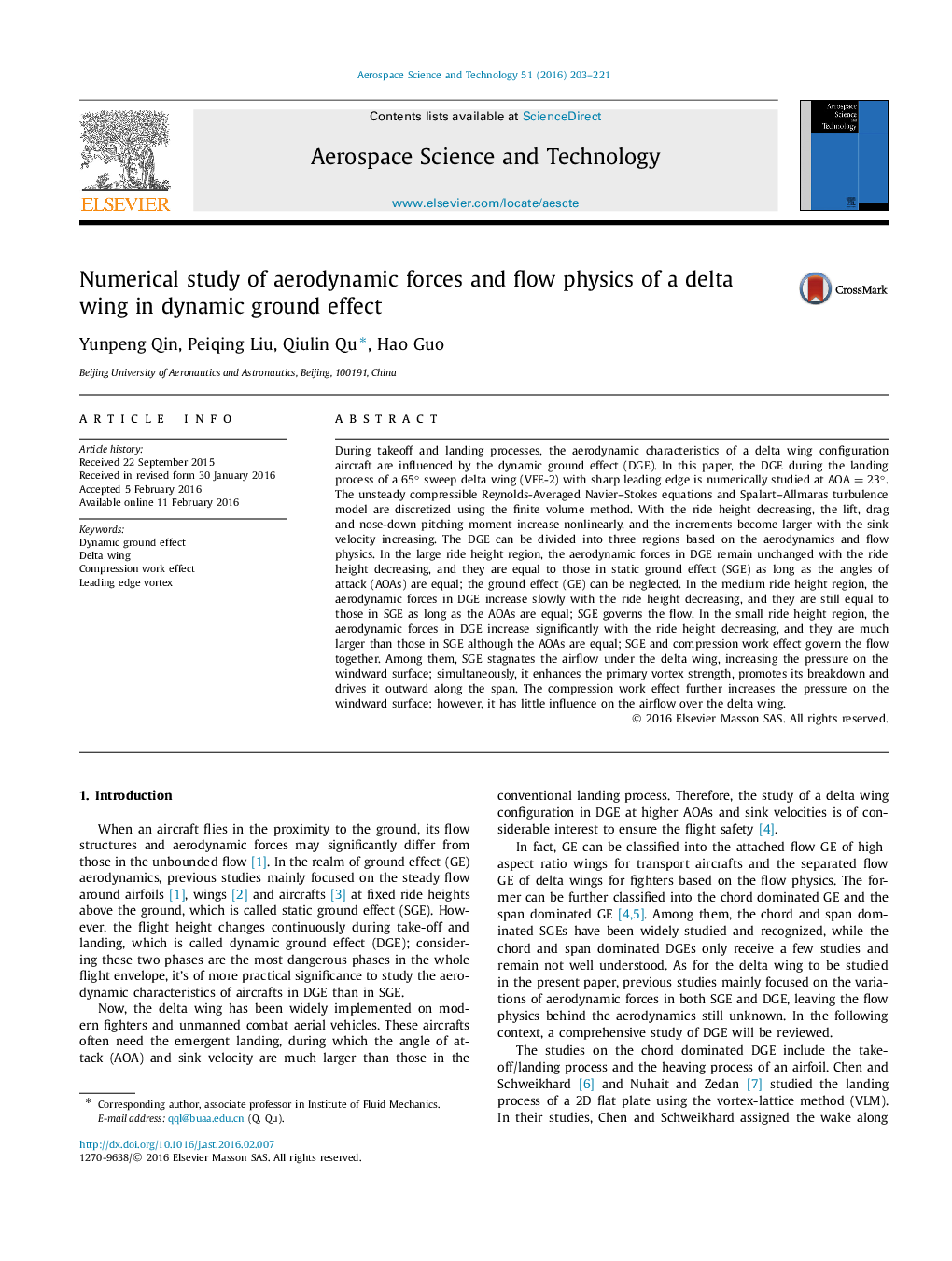| Article ID | Journal | Published Year | Pages | File Type |
|---|---|---|---|---|
| 1717659 | Aerospace Science and Technology | 2016 | 19 Pages |
Abstract
During takeoff and landing processes, the aerodynamic characteristics of a delta wing configuration aircraft are influenced by the dynamic ground effect (DGE). In this paper, the DGE during the landing process of a 65° sweep delta wing (VFE-2) with sharp leading edge is numerically studied at AOA = 23°. The unsteady compressible Reynolds-Averaged Navier-Stokes equations and Spalart-Allmaras turbulence model are discretized using the finite volume method. With the ride height decreasing, the lift, drag and nose-down pitching moment increase nonlinearly, and the increments become larger with the sink velocity increasing. The DGE can be divided into three regions based on the aerodynamics and flow physics. In the large ride height region, the aerodynamic forces in DGE remain unchanged with the ride height decreasing, and they are equal to those in static ground effect (SGE) as long as the angles of attack (AOAs) are equal; the ground effect (GE) can be neglected. In the medium ride height region, the aerodynamic forces in DGE increase slowly with the ride height decreasing, and they are still equal to those in SGE as long as the AOAs are equal; SGE governs the flow. In the small ride height region, the aerodynamic forces in DGE increase significantly with the ride height decreasing, and they are much larger than those in SGE although the AOAs are equal; SGE and compression work effect govern the flow together. Among them, SGE stagnates the airflow under the delta wing, increasing the pressure on the windward surface; simultaneously, it enhances the primary vortex strength, promotes its breakdown and drives it outward along the span. The compression work effect further increases the pressure on the windward surface; however, it has little influence on the airflow over the delta wing.
Keywords
Related Topics
Physical Sciences and Engineering
Engineering
Aerospace Engineering
Authors
Yunpeng Qin, Peiqing Liu, Qiulin Qu, Hao Guo,
